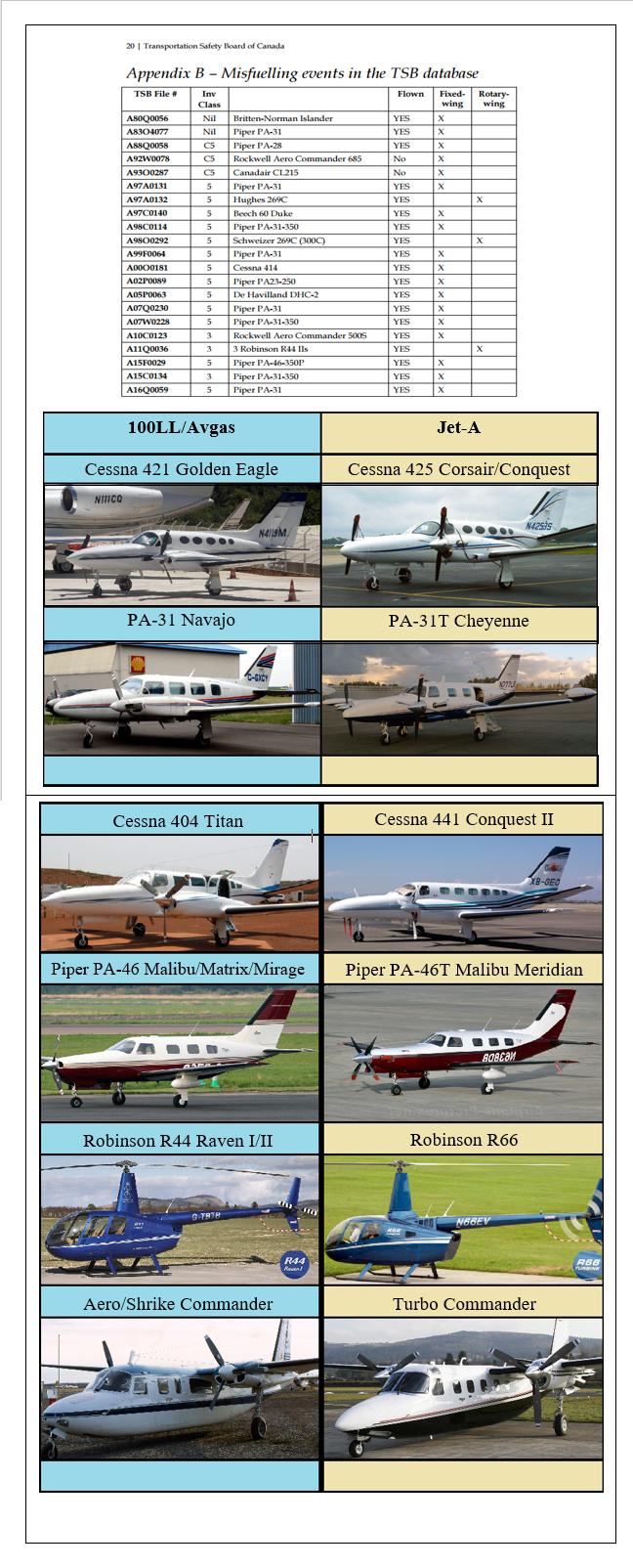If this were a perfect world, the jet nozzle would not have fit in your 100LL fuel receptacle.
At least, that is how they are SUPPOSED to be designed.
You would think so! The duckbill/hoover nozzle is wider than most (not nearly all) 100LL fuel ports. A few months ago a JetPROP conversion Malibu came in and he still had the 100LL size ports and I had to put jet into it. The most unnerving feeling defeating a safety against misfueling on purpose.
Until the lineman asks for a funnel to fill the 172 with Jet A.

Just wait until Diesel catches on!
I generally don't supervise people who are paid to fuel my planes. Just as I don't supervise the A&P's who work on them.
The 100LL placards are in place and I assume they are competent. I sump the tanks after having been fueled. Like water, Jet A has a higher specific gravity than 100ll. There's also the color.
Yep, but remember the testing I did - you can't see it. Always do the paper test if you're not sure

Well they were training the guy that fueled me today. The supervisor had to tell him to put chocks down. Don't think this kid would know what the placard meant..

Who needed choking? Perhaps chocks? And Doubt rather than drought.
And he was supervised. For good reason.
I'm curious what
@overdrive148 thinks about the topic.
Not even going to lie, on my first week of line service ever I clamped the bonding cable (with teeth) to the vent underneath a Baron's engine (which was painted). Then again, I had a Cirrus that pulled up to the self service pump who had literally never fueled his own airplane and asked me for help. It's a learning experience. Bonus points on him for asking instead of just going for it and fueling you with what he thought was the correct fuel.
Now I'm NATA Safety 1st / Professional Line Service trained and certificated. And even did the Advanced Workshop in Houston a few months ago.
Check out the accident chain on this one -
http://www.bst-tsb.gc.ca/eng/rapports-reports/aviation/2015/a15c0134/a15c0134.asp
Bonus points at the end, you can put the TSB file numbers into google and read reports about it. A lot of LST's throwing fuel into planes they aren't sure of. In the NATA training, you have to have 3 pieces of info for a fuel order:
Tail Number
Fuel Quantity (Pilot)
Fuel Grade (Placard or Pilot)
Chocks are usually a company thing, I only chocked 1 of the wheels in Shawnee and often none if I verified the brakes were set. At my current job it's mandatory 2+.You don't even chock the nose on some aircraft like the Eclipse jet because of the heated pitot tube right above you, and you have to make sure the chocks aren't under the gear doors because when you fuel it the doors will come down on the chocks. Tow pins and presets and checks and all kinds of things you have to learn for towing and line service.
I made this when I started the job in Fort Worth and it's posted in the office.
You don't think it's possible until you get a regular customer Cessna 425 (Jet A) and then a 421 rolls in with almost the same paint job and literally one number different (421XX vs 425XX). It almost caught even me by surprise.
 Had a nice flight this morning. I needed fuel and asked the FBO to stop by and fill the tanks. When the fuel man showed up "he asked me if I wanted Jet A?" I said no were did you get that idea? He replied that's what the dispatcher told him and that she was new. Well we topped the Baby Beech off with 100LL and all was good.
Had a nice flight this morning. I needed fuel and asked the FBO to stop by and fill the tanks. When the fuel man showed up "he asked me if I wanted Jet A?" I said no were did you get that idea? He replied that's what the dispatcher told him and that she was new. Well we topped the Baby Beech off with 100LL and all was good.


